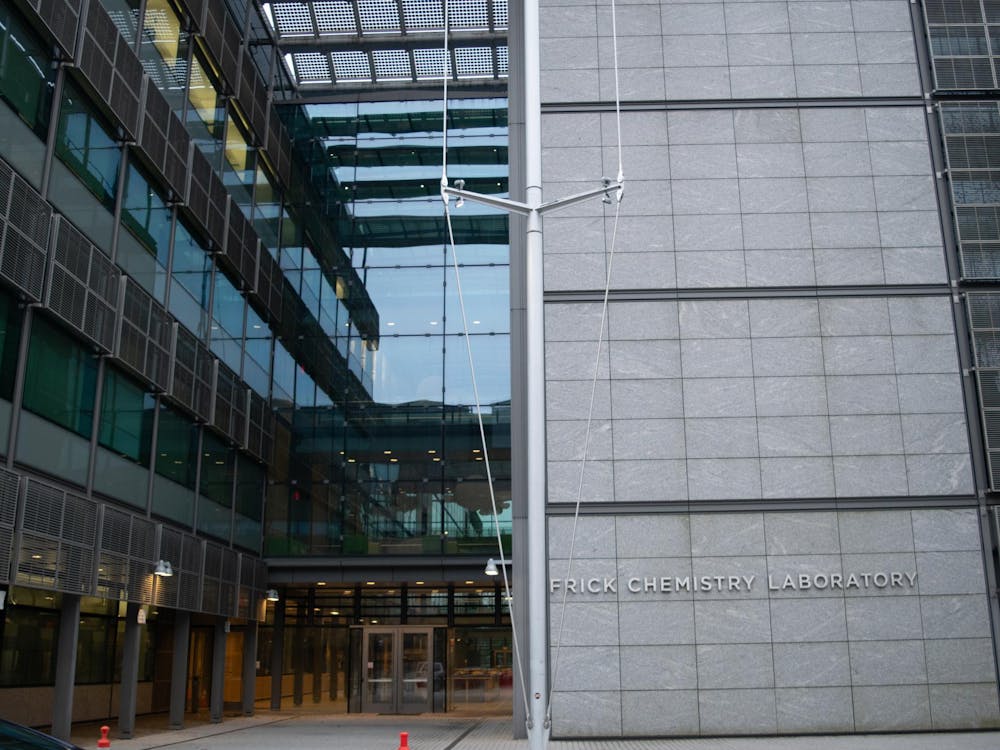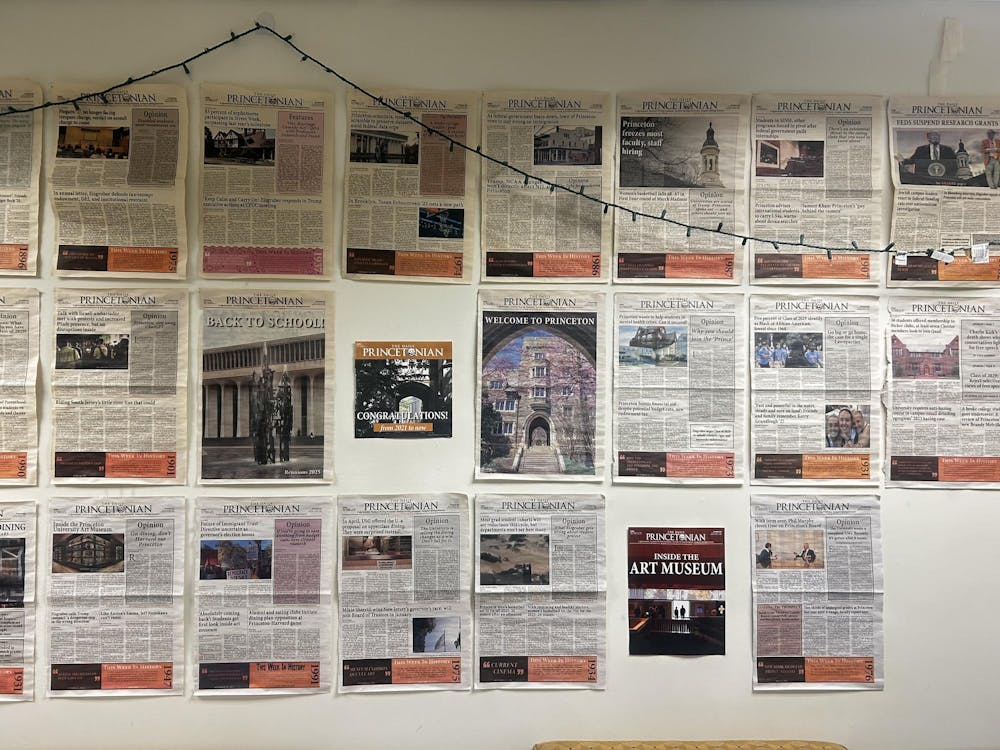
Titus Kaphar, an African-American painter and sculptor whose works are featured in the Museum of Modern Art, discussed the intersection between racism and the University’s history this Thursday in McCosh Hall.
Kaphar’s “Impressions of Liberty” will be featured for six weeks on the lawn next to Princeton's historic Maclean House. The large-scale wood and glass structure presents a bust of Samuel Finley, a slaveowner and the fifth president of Princeton, combined with the glass portraits of an African-American man, woman, and child. It is currently located under the American sycamore trees where Finley’s slaves were auctioned in 1766, ironically nicknamed the “Liberty Trees.”
At twilight, when the sun begins to set, the figures in the front appear brighter and blend with the figures in the background. Kaphar explained that the sculpture is supposed to be “visually confusing,” and that the sculpture’s impact is intended to be increased because it “is a struggle to see.”
Kaphar created his first painting at age 27. His interest in art was motivated by his desire to impress his current wife, so he registered for art history and realized that he had untapped artistic potential.
“The idea that I had any type of intelligence was utterly shocking,” said Kaphar. “Art gave me a language to engage the world with.”
Although he received his MFA from the Yale University School of Art, Kaphar admitted that he never did well in high school, boasting a mere 0.75 GPA.
Kaphar recalls taking an art history survey course in which the professor purposefully skipped over the only section of the course that focused on Black artists. Kaphar, the only Black student in the class, calmly asked the professor and the dean why the section was skipped. To his disappointment, Kaphar was told that he couldn’t force the professor to teach anything.

“If I wanted this information, I was going to have to seek it out myself,” Kaphar said. “I was going to have to find my own books, my own teachers.”
Kaphar's quest for a better understanding of African-American art history ultimately inspired his body of work, “Visual Quotations,” which was composed entirely on dry-erase white boards. Starting with 18th and 19th century paintings that depicted Black people, he erased everything from original portraits except for the Black figures. The works were designed to draw attention to these marginalized figures, addressing a recurring representation of enslaved Black people as imperfect goods.
“All of my works have personal connections,” Kaphar said.
Khapar recalled a stop-and-frisk incident involving his younger brother that inspired his future artwork. He admitted that although he loves his younger brother, the two do not get along, mainly because they don't have much in common.

“[My brother] only cares about two things: women and shoes,” Kaphar joked.
However, Kaphar’s brother demonstrated an interest in art when he visited Kaphar’s exhibit in New York, staying nearly two hours to examine the paintings. Just as Kaphar was about to have a heart-to-heart with his brother, two Caucasian police officers forcefully approached and patted down both members of the pair.
When the officer finally returned Kaphar’s driver license to him, he told Kaphar, “I hope you don’t have a moment when you need the police because we might not be there for you.”
That experience made Kaphar feel as if his citizenship was less valuable than someone else’s, inspiring his 2014 piece, “Yet Another Fight for Remembrance,” in which only the upper half of two Black figures’ faces are revealed. He explained that the covering of the face is meant to convey silence: “seeing what’s going on but silence nonetheless.”
His next large project involved “monumental inversions”: instead of taking down controversial sculptures entirely, Kaphar argued for their amendments. He explained that when a sculpture is taken down, the public will forget the process by which a community normalized the erection of a sculpture that degraded the existence of groups of people.
“We need to remember how these things take place, so it won’t happen again. It can become a form of dialogue,” Kaphar said. “Simply taking down the sculpture down is not conversation.”
Kaphar emphasized that he is not trying to demonize the founding fathers, but that he is also not trying to “deify” them. One of his works, “A Pillow for Fragile Functions,” is an impression of George Washington’s head, as represented by a glass cavity, resting on a marble pillow. Inside the glass cavity are molasses, rum, lime, and tamarind, all the items that Washington traded for a slave, who repeatedly attempted to run away.
Kaphar’s most recent work is the PostMasters project, which is invested in mentorship, professional development, and skills training for the local arts community in New Haven, Conn. Through PostMasters, Kaphar hopes to introduce recent college graduates to professional development programs and even high school students to entry-level curating.
Kaphar’s talk is one of several artistic events accompanying the Princeton and Slavery Project, a scholarly symposium taking place Nov. 17–18 to discuss the connection between the University’s history and the institution of slavery. Nobel Laureate Toni Morrison will give a keynote address on Nov. 17, and McCarter Theatre will premiere the newly commissioned “Princeton and Slavery Plays” on Nov. 19.







